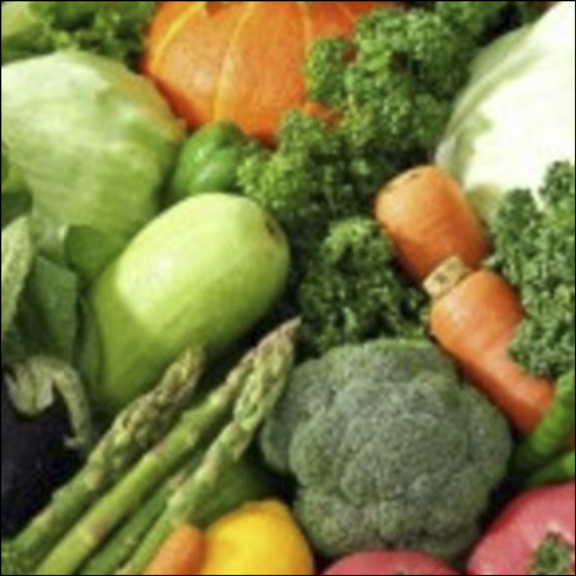Workshops at the VIC:
Vegetable Garden Planning Workshop
Saturday, 27 February 2016, 10:30 AM
 Instructor: Richard Gast; Extension Educator – Horticulture; Cornell Cooperative Extension of Franklin County
Instructor: Richard Gast; Extension Educator – Horticulture; Cornell Cooperative Extension of Franklin County
Cost: Free
Description: It’s the middle of winter – the time of year when gardeners across the region, green thumbs as well as greenhorns, start thinking about summer vegetable gardening. It’s time to start planning. And it’s amazing what can come of some imagination and a little effort. Here are some questions to ask yourself before you start:
- Is your vegetable garden going to be a large garden in the country?
- A small garden along the fence or in the dooryard?
- Or maybe just a raised bed, or a number of containers placed outside of your home or apartment?
Whichever you choose, it’s time to order vegetable seed catalogs if you haven’t done so already; and time to make lists and order your seeds, if you have.
Every year, more and more first-time vegetable gardeners are getting into vegetable gardening.
- It's a fun family activity that provides both outdoor recreation and exercise.
- Others begin gardening because of worries about food safety.
- Growing your own vegetables is a great way to eat healthier, too. Homegrown vegetables are so much fresher and better-tasting than industrially-grown, supermarket-purchased produce.
- However, the leading incentive seems to be the ever-increasing cost of food. As rising food costs take a bigger and bigger bite out of family budgets, growing food, or at least some of it, can be a great way to save money. In fact, a few plants and some canning equipment and/or a bit of freezer space can save a lot of money.
Start Small
If you have a lot of time to devote to gardening, great! If not, keep it simple. Plan accordingly. And be creative. A lot of knowledge is not required. Understanding a few basics is.
Weeds and pests need to be controlled; and the time and commitment that this requires, especially in large gardens, cannot be overstated. It’s better to have a small, well-maintained garden than a large one that’s neglected, weedy, and prone to insects and disease. First-time gardeners often plant more than they can easily maintain and, because of this, they fail. Instead, choose crops that have fewer pest problems and that will allow you to produce more food in less space. You can always expand later or next year.
Keep in mind, too, that succession planting of quickly-maturing crops and cultivars will allow you to produce more than one crop (one early, one later) within the confines of a smaller garden. Several radish varieties, for instance, mature in 30 days or less. There are many short-season lettuces that are both tasty and attractive. Since lettuce likes cool weather, seed can be planted early in the spring and again, late in the summer. The same can be said for several frost-tolerant varieties of spinach and even for several varieties of easy to grow, high-yielding bush beans, some of which mature in 2 months or less. A few varieties of fast-growing beets will reach maturity within 2 months, as well.
In fact, if you carefully plan it out and start your first crop early, you can grow a succession of crops in the same garden space; one early, one later, and possibly even a third.
- For example, start with early-season lettuce or spinach, followed by a crop of radishes, followed by a late season crop of lettuce, spinach, or salad greens.
- Peas can be started early (very early, under cover) and, as their production starts to diminish, low-growing crops, such as beets, Swiss chard, or bush beans can be planted along the bottom of the trellis.
- Crops, like spring onions and carrots can be thinned out when they are young and the smaller ones eaten. You can continue harvesting and eating as the plants mature.
Sunshine, Site, and Soil
When considering a site, keep in mind that adequate sunlight is essential.
- A superior garden site will offer good air circulation and a southern exposure that receives full sun. We all won’t have the perfect site, but one that receives a minimum of 6 hours of full sun, with 8 hours preferred, will suffice.
- Avoid areas where structures, trees, or shrubs will shade out your plants. (Trees and shrubs will also compete for soil moisture and nutrients.) Keep in mind that objects, like trees, which may not shade out your garden in June, may cast a shadow on the garden in late August or September, when the sun is lower in the sky.
- If a full-sun site is unavailable, you can still consider planting leafy vegetables which can be grown in partial shade.
A relatively level garden site is preferred. Good soil is essential. In fact, the quality of your garden soil can be the difference between thriving, healthy plants and sickly, struggling, unproductive ones. Loose, fertile, well-drained sandy loam or silt loam soil is best. Areas of heavy clay and waterlogged sites should be avoided. Perfect soil is rarely available however, so gardeners commonly improve, replace, or amend the soils they have. Soil amendments should be rich in organic matter, which creates good texture, helps make garden soils more-easily workable, and promotes the biological activity that allows plant roots to take up necessary nutrients.
Learn More
Join Richard Gast, from the Cornell Cooperative Extension of Franklin County, on Saturday, 27 February, at 10:30 AM for a vegetable planning workshop.
